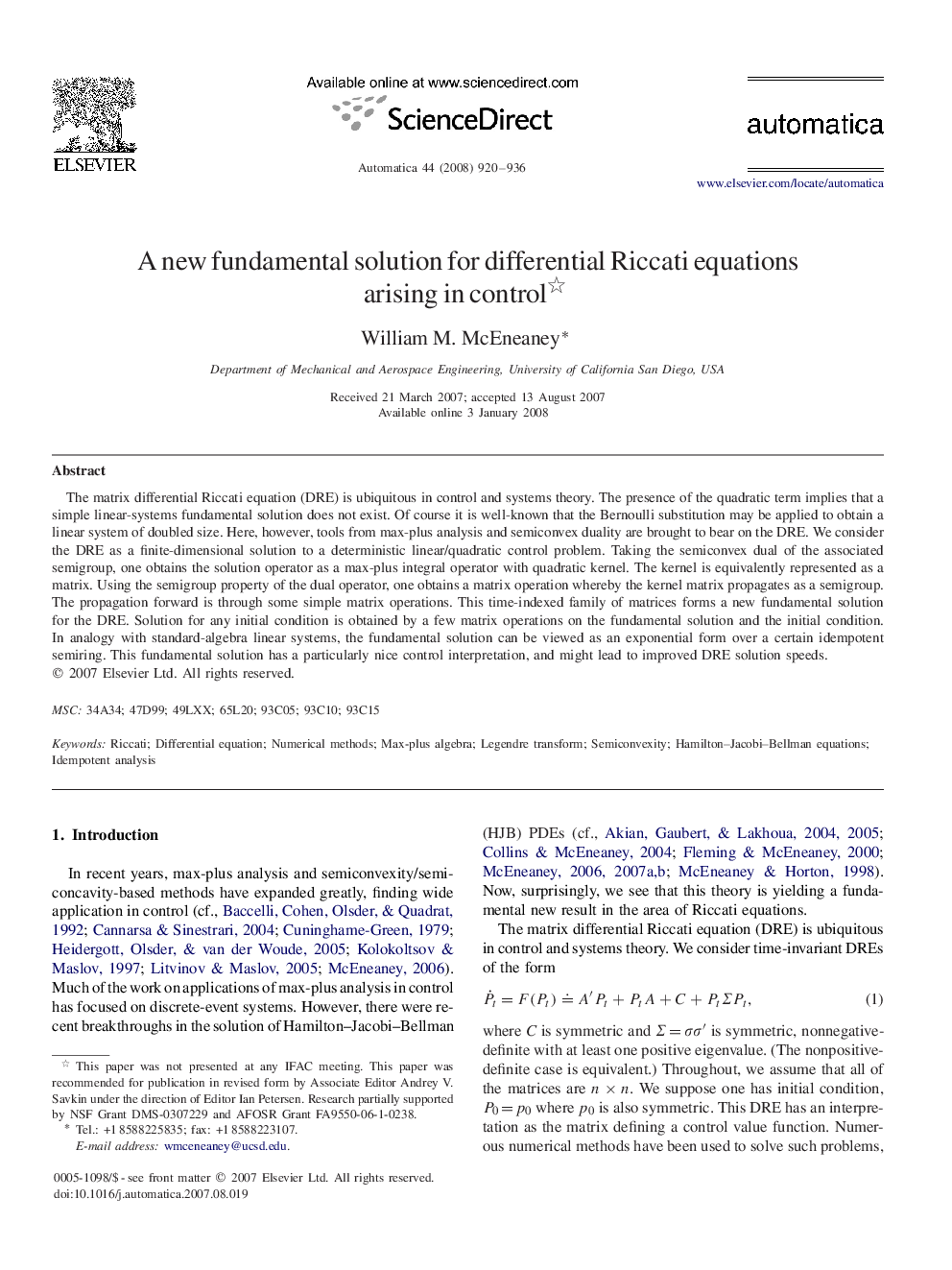| کد مقاله | کد نشریه | سال انتشار | مقاله انگلیسی | نسخه تمام متن |
|---|---|---|---|---|
| 697360 | 890367 | 2008 | 17 صفحه PDF | دانلود رایگان |

The matrix differential Riccati equation (DRE) is ubiquitous in control and systems theory. The presence of the quadratic term implies that a simple linear-systems fundamental solution does not exist. Of course it is well-known that the Bernoulli substitution may be applied to obtain a linear system of doubled size. Here, however, tools from max-plus analysis and semiconvex duality are brought to bear on the DRE. We consider the DRE as a finite-dimensional solution to a deterministic linear/quadratic control problem. Taking the semiconvex dual of the associated semigroup, one obtains the solution operator as a max-plus integral operator with quadratic kernel. The kernel is equivalently represented as a matrix. Using the semigroup property of the dual operator, one obtains a matrix operation whereby the kernel matrix propagates as a semigroup. The propagation forward is through some simple matrix operations. This time-indexed family of matrices forms a new fundamental solution for the DRE. Solution for any initial condition is obtained by a few matrix operations on the fundamental solution and the initial condition. In analogy with standard-algebra linear systems, the fundamental solution can be viewed as an exponential form over a certain idempotent semiring. This fundamental solution has a particularly nice control interpretation, and might lead to improved DRE solution speeds.
Journal: Automatica - Volume 44, Issue 4, April 2008, Pages 920–936